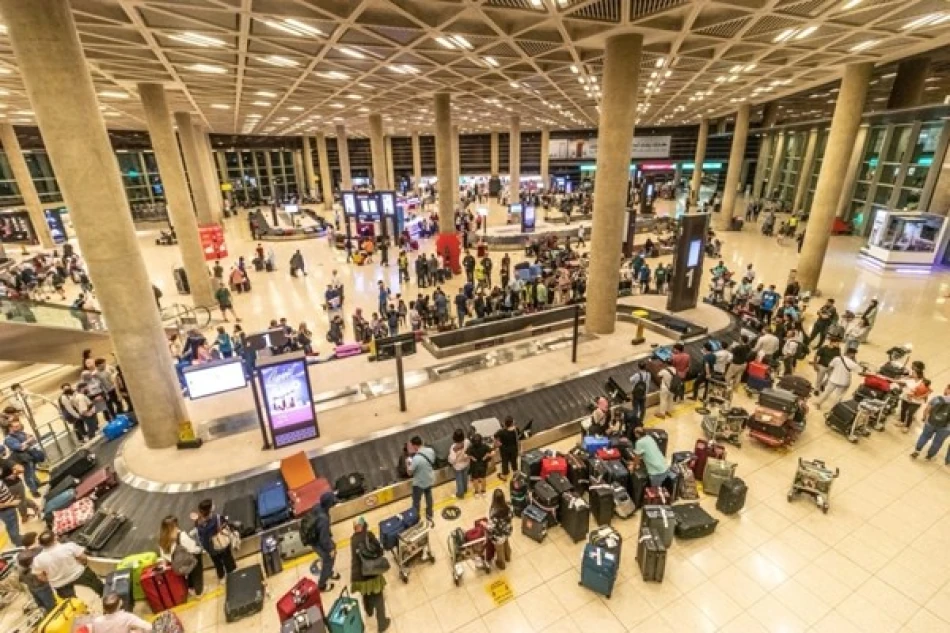
Jordan's Tourism Surge: Saudi Arabia and UAE Lead as Visitor Numbers Soar in First Half
Jordan's Tourism Boom: Gulf Visitors Drive 14% Growth Despite Regional Turmoil
Jordan's tourism sector has defied regional instability to post impressive gains in the first half of 2025, with overnight visitors surging 14% to 2.7 million tourists. The growth is largely fueled by Gulf state visitors, particularly Saudis, highlighting Jordan's strategic positioning as a stable haven amid Middle Eastern geopolitical tensions.
Gulf States Lead Jordan's Tourism Revival
Visitors from Gulf Cooperation Council (GCC) countries increased by 6% to 633,000 tourists, compared to 597,000 in the same period last year. Saudi Arabia dominated this segment, contributing 564,000 overnight visitors—an 8% jump that underscores the kingdom's growing outbound tourism appetite as Vision 2030 reforms boost disposable income and travel culture.
The UAE showed even stronger growth at 15%, reaching 10,000 visitors, while Kuwait bucked the trend with an 11% decline to 32,000 tourists. This divergence likely reflects Kuwait's more cautious approach to regional travel amid ongoing security concerns.
Why Jordan Appeals to Gulf Travelers
Jordan's success taps into several competitive advantages that rival destinations like Egypt or Lebanon currently struggle to match. The kingdom offers cultural familiarity without the political volatility that has plagued other Arab tourist destinations. Its proximity to Gulf states—just a short flight away—combined with shared language, customs, and religious heritage, creates a "second home" appeal that transcends typical tourism metrics.
Dr. Abdul Razzaq Arabiyat, Director General of the Jordan Tourism Board, emphasized this cultural connection: "The close distance and shared customs and traditions make Jordan a natural and preferred destination for families and individuals from the Gulf states."
Petra and Heritage Sites Drive International Appeal
Beyond Gulf visitors, Jordan attracted significant numbers from Europe (191,000), North America (79,000), and Asia (84,000). The ancient city of Petra led heritage site performance with 200,000 foreign visitors—a 17% increase that signals strong recovery in long-haul tourism post-pandemic.
Mount Nebo saw 12% growth to 105,000 visitors, while Jerash welcomed 69,000 international tourists. These numbers suggest Jordan's UNESCO World Heritage sites are successfully competing with Mediterranean and European alternatives, particularly as travelers seek authentic cultural experiences over traditional beach destinations.
Strategic Implications for Regional Tourism
Jordan's performance contrasts sharply with tourism struggles in Lebanon, Syria, and even parts of Egypt. While the UAE and Saudi Arabia invest heavily in creating new tourism mega-projects, Jordan leverages existing historical assets and political stability to capture market share.
This growth comes as Gulf states themselves pivot toward tourism diversification. Saudi Arabia's NEOM and UAE's Expo legacy projects create both competition and opportunity—Gulf residents may increasingly view travel as essential lifestyle spending, benefiting stable regional destinations like Jordan.
Economic Impact and Future Outlook
Tourism represents approximately 15% of Jordan's GDP, making this growth crucial for economic stability. The sector's resilience during regional tensions demonstrates Jordan's value proposition: accessible Middle Eastern culture without security risks that deter international visitors elsewhere.
The Jordan Tourism Board's focus on Gulf-specific packages and family-oriented experiences positions the kingdom well for sustained growth. As regional conflicts continue affecting competitor destinations, Jordan's combination of heritage tourism, political stability, and cultural affinity with Gulf states creates a sustainable competitive advantage that extends beyond typical tourism cycles.
Most Viewed News

 Layla Al Mansoori
Layla Al Mansoori






